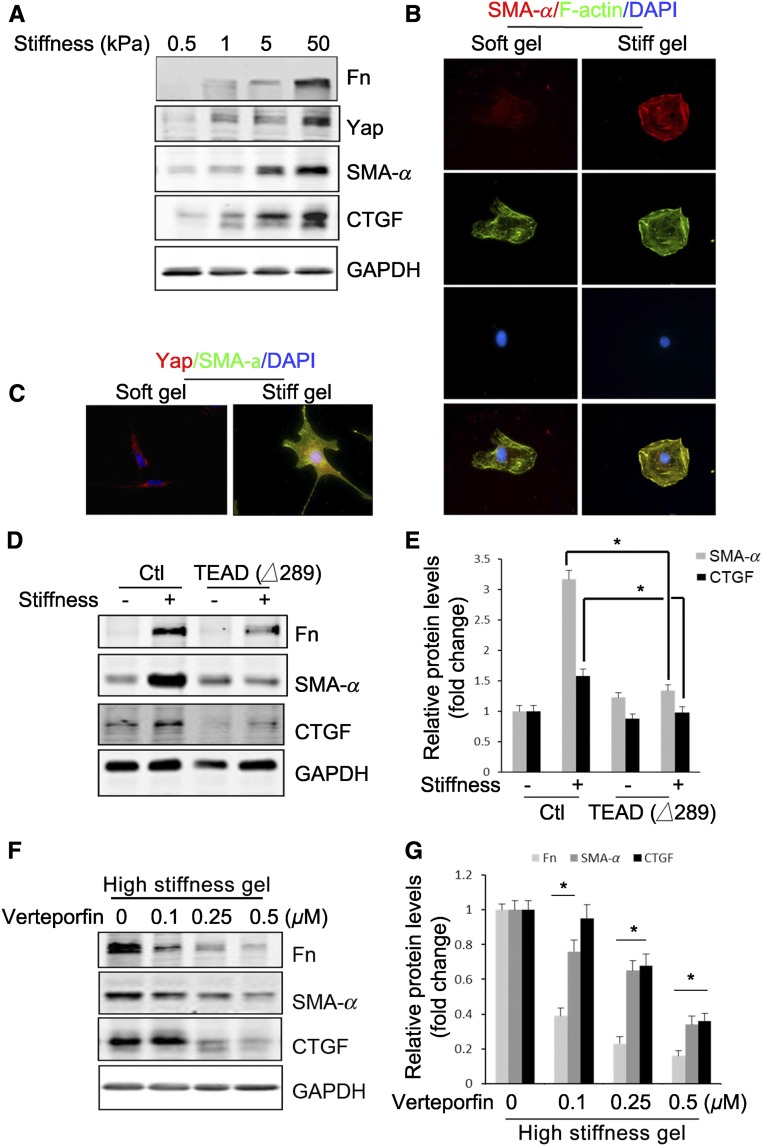Figure 3.
Matrix stiffness stimulates Yap-dependent fibroblast activation. (A–C) Stiff gel induces Yap expression and fibroblast transformation. Fibroblasts were incubated on polyacrylamide gels of varied stiffness but conjugated with the same collagen concentration on the top surface. This creates a microenvironment in which the mechanical properties are uncoupled from the biochemical properties. The expression of Yap and myofibroblast markers were detected by western blot (A), and the stress fiber formation (B) and Yap localization (C) and their costaining with SMA-α were determined by immunofluorescent staining (C). (D and E) Inhibition of Yap signaling suppresses stiffness-induced fibroblast activation. Control or fibroblasts expressing TEAD (Δ289) were seeded on soft or high-stiffness gel for 24 hours, the expression of myofibroblast markers were detected by Western blot (D), and the density was analyzed (E) (P<0.05, compared with stiffness-treated control group). (F and G) Fibroblasts on high-stiffness gel of 50 kPa were incubated with or without varied concentrations of verteporfin for 24 hours, the expression of myofibroblast markers was detected by western blot (F), and the density was analyzed (G). Data were presented from two repeated experiments. P<0.05, compared with control.

